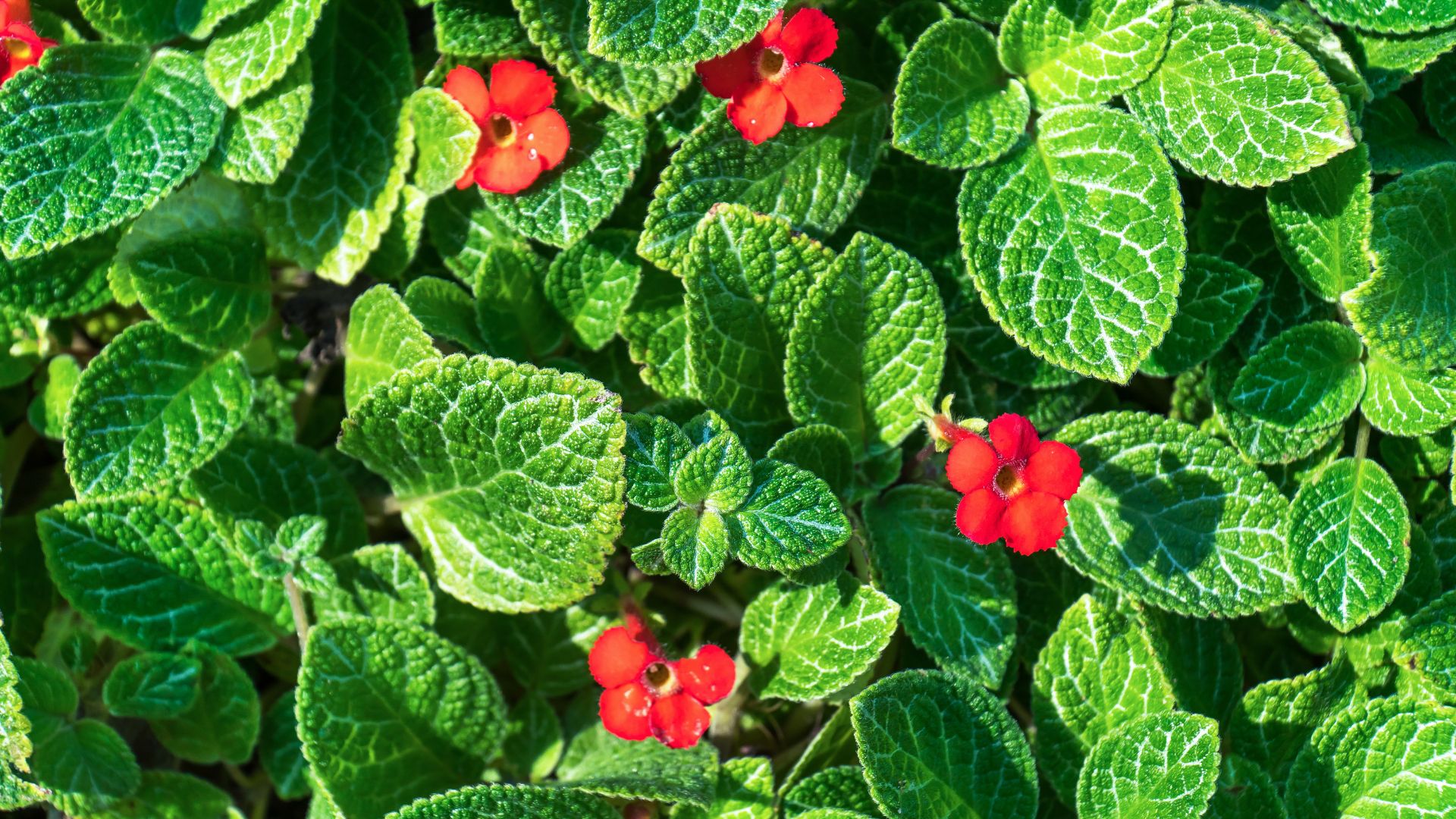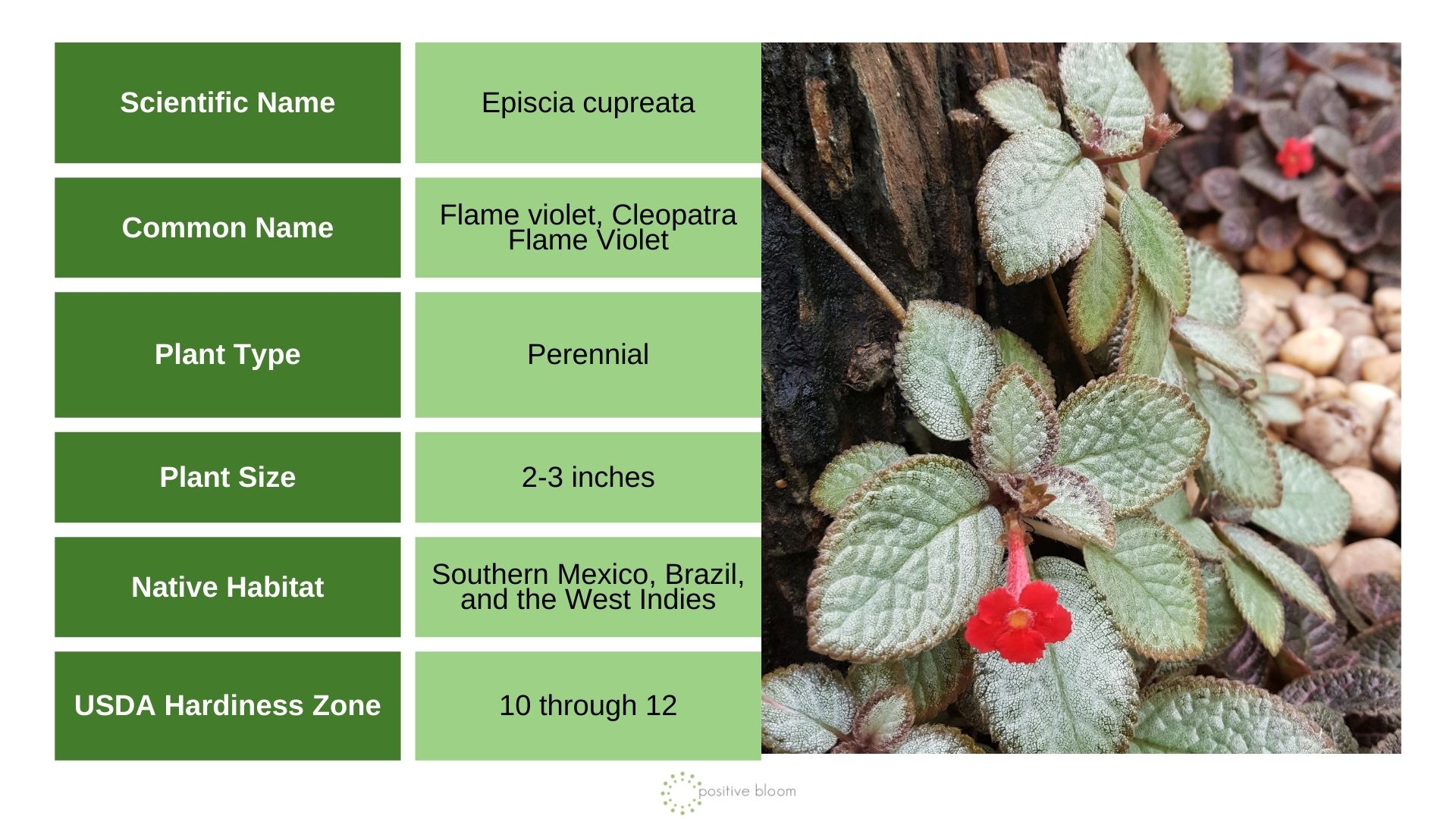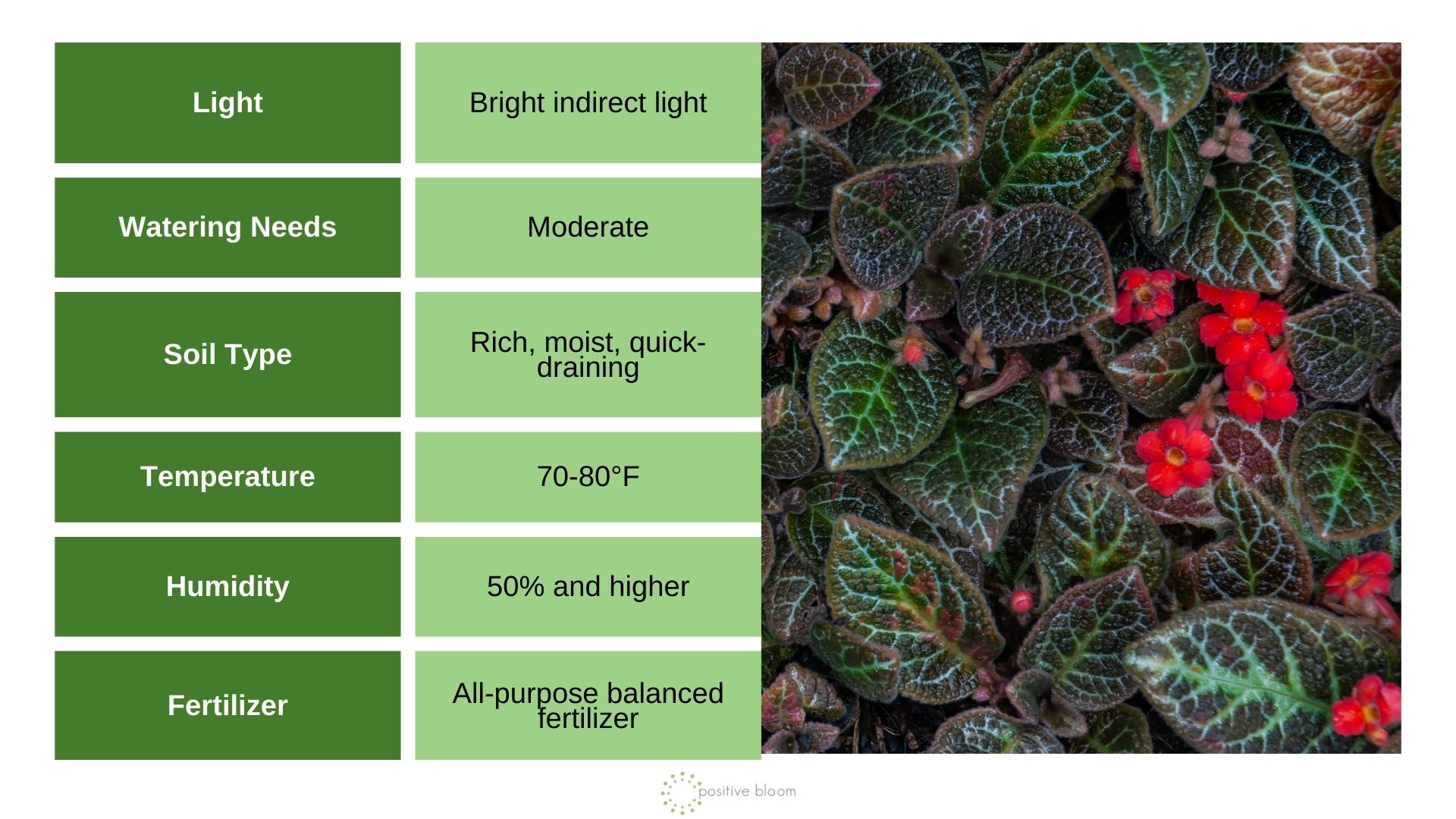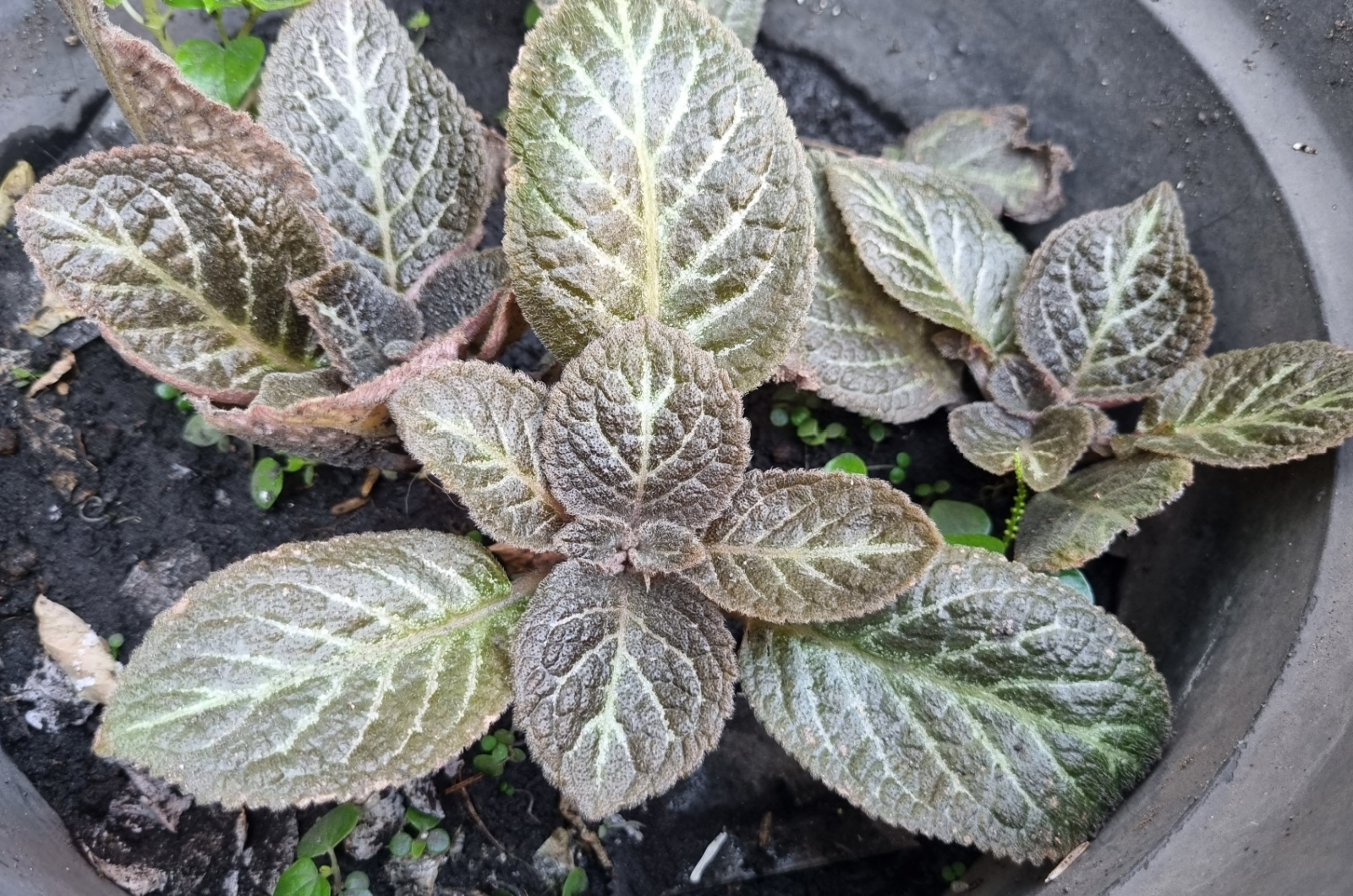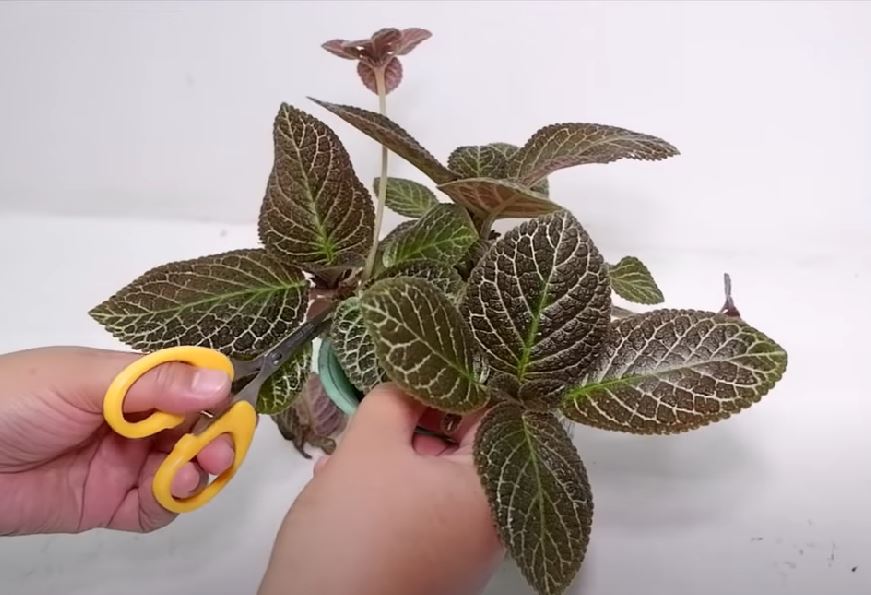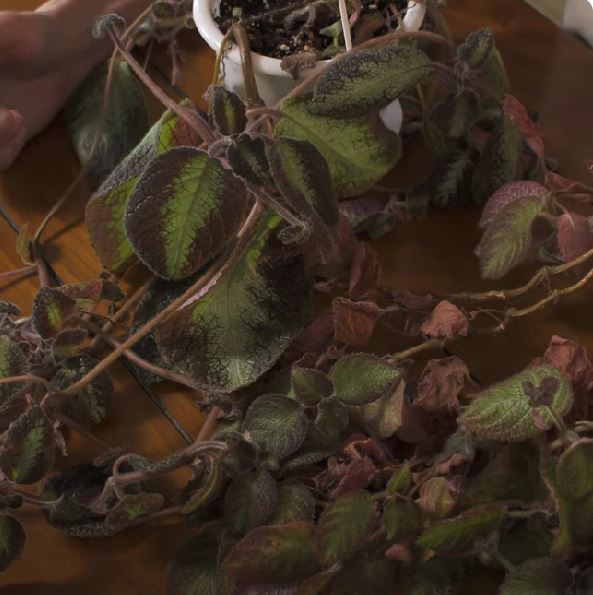African violets are the favorite plants of many growers. If you’re one of them and already have some in your garden, there’s one relative of this plant that will knock you off your feet.
Meet the Flame violet, a captivating plant from the Episcia genus. Its showy blossoms and colorful foliage make it worthy of every garden!
In this article, I’ll show you how to plant, grow, and care for flame violets, and also how to get new plants for free and deal with common issues!
Let’s get started!
More About Flame Violets
Flame violets are small and compact perennials native to tropical and subtropical regions.
The leaves are oval-shaped or elliptical and frequently covered in soft flocking. What’s special about Flame violets is the uniquely ribbed texture found on the foliage, which creates a spectacular shimmering effect.
Foliage develops into rosettes and they spread rather than grow upward. The main benefit of such a growth habit is that it makes Flame violets easy to propagate.
Leaves are typically variegated and come in pink, red, green, and white hues.
Blossoms are small and tubular; red and light pink are the most frequent bloom colors but some varieties come in shades of orange, white, purple, or yellow.
Varieties To Select
Here are some of the most beautiful Flame violet varieties.
• Jim’s Canadian Sunset: Coral pink blooms have textured margins and yellow centers, and the leaves are also heavily textured and come in dark green.
• Bethlehem Pink: Deep green foliage is covered in soft hairs and blooms come in bright pink and have yellowish centers.
• Chocolate Soldier: This variety can reach up to 12 inches and features bluish-green foliage with dark streaks toward the outer leaf margins. Textured leaves combine perfectly with red or orange blooms.
• Tropical Topaz: It comes in yellow, which is pretty uncommon for Flame violets. The light green foliage looks lovely and the small blooms look perfect in hanging baskets.
Guide On Planting Flame Violets
If you live in cooler climates, you should grow Flame violets in containers. Remember that these are tropical plants that can’t withstand low temperatures.
Plant your Flame violets in a free-draining soil type with a neutral pH. The planting hole should be approximately as deep as the root ball and twice as wide.
Add more soil and pack it well around the Flame violet’s base.
Growing Guide
Well, Flame violet plants can be fussy over growing conditions, but once you get the gist they’re easy to maintain, just like their cousins.
Here’s an overview of Flame violet’s basic requirements.
Light
These are understory plants, which means they don’t receive direct sunlight in their natural environment.
Therefore, provide your Flame violets with bright indirect light. If you can’t find a spot in your home with such sun exposure, install artificial lights.
Too much direct sunlight can cause browning and scorching of Flame violet foliage. On the other hand, insufficient light leads to legginess.
Water
The most important thing for Flame violets is to keep their soil consistently moist. The containers in which you keep these plants must have holes in the bottom for the excess water to drain out.
If all the conditions are ideal, you’ll most likely need to irrigate your Flame violets once a week during the summer.
Cut back on watering during the winter months because plants won’t display new growth and won’t use that much water.
Wait until the upper two inches of the soil dry out and then give your Flame violets a good soak.
Use room temperature water or, even better, rainwater for irrigating these plants.
Soil
These plants thrive in the same soil as African violets. So, ensure fertile and moist soil with excellent drainage.
Sandy soils aren’t a good choice for Flame violets because they don’t retain enough water. The same applies to compact soils that retain too much water, which can suffocate plant roots.
You can purchase standard soil mix and promote drainage by adding ingredients such as perlite and peat moss.
Neutral soil pH works best for Flame violets.
Temperature And Humidity
These plants are native to tropical places, which means they need warmer temperatures for healthy growth. They won’t tolerate temperature fluctuations so keep them away from heating sources and doors and windows that open and close often.
A temperature range between 70 to 80 degrees Fahrenheit works perfectly for Flame violets.
If the temperatures drop below 65 degrees, your Flame violets are in danger and can display browning on leaf margins.
Opt for a humidity of 50% or higher because this level is found in the natural environment. A humidifier or pebble tray can help you raise the humidity around your Flame violets.
Alternatively, put your Flame violets in your bathroom if possible, but never mist them because it can cause the leaves to rot.
Fertilizer
You can use the same fertilizer as for African violets. Alternatively, go with all-purpose fertilizer but make sure it’s balanced.
Start fertilizing your Flame violets in spring and apply fertilizer every 2 weeks. You can reduce the fertilizing frequency to once a month when fall arrives or you can skip feeding if your plants are healthy.
Pruning And Repotting
You can repot your flame violets every two years to give the roots more space to grow. When purchasing a new container, make sure it’s not more than 2 inches larger in diameter than the current one.
Flame violets typically don’t require pruning. If the plant overgrows, pinch back stems after the blooming stage is over.
How To Propagate Flame Violets
I have great news for you! You can easily propagate Flame violets and get more plants for free! The best propagation methods for Flame violets are leaf and stem cuttings, or propagation from runners.
I avoid seed propagation for these plants because it takes a long time for them to develop.
Propagation Through Cuttings
If you decide on this method, start propagating in spring so that the cuttings have enough time to develop over the growing season.
1. Take Flame violet cuttings near the base of the plant. Make sure the leaf is healthy and there’s a small portion of the stem attached.
2. Dip the cut end of the Flame violet cutting in root hormone to promote further development and root formation.
3. Put the cuttings in a rooting medium; you can use water, sphagnum moss, or soil.
4. Once the roots are formed, plant your Flame cuttings in pre-moistened soil.
Using Runners For Propagation
If your Flame violet generates a runner or longer stem (where a new rosette starts to form) you can use it for propagation.
You can help the runners to root in two ways. The first one is not to cut them but rather to bury a section of the runner at the leaf joint in the soil. As soon as the runner generates new roots, cut and plant it in a suitable potting soil.
The second method is to cut the Flame violet runner with a portion of the stem attached. Put it in soil or sphagnum moss, or use water as a rooting medium.
Runners typically take 2 months to generate roots no matter which propagation method you use.
Common Issues
We’ve already discussed how temperatures and light can cause issues in Flame violets. Now it’s time to see other problems that can occur in these lovely plants.
Pests
Pests are less common in indoor plants, but if one plant has it, it can spread to your Flame violets.
Sticky honeydew on the leaves can indicate aphid infestation in Flame violets. If you notice white, fuzzy, and waxy residue on the leaves, mealybugs are most likely to blame.
You can remove these nuisances with a few common pest control methods, such as wiping plant leaves with rubbing alcohol or a neem oil solution.
Diseases
Here are some diseases found in Flame violets.
• Fungal leaf spot: This disease can occur if there are water droplets on the Flame violet leaves.
Yellow spots are the telltale signs of this disease and the best idea would be to remove infected leaves with sanitized scissors.
• Stem blight: This is a less common disease but it can affect plants grown in a humid environment. Promoting air circulation will protect your Flame violets from stem blight.
• Root rot: This disease is the most common in all houseplants, not only in Flame violets. Yellow leaves, black and mushy roots, wilting, and a foul odor are the most common signs.
Overwatering typically causes the infection so make sure to irrigate your Flame violets when the soil dries a little bit. Remove all the infected roots, treat the root system with fungicide, and repot your Flame violets.
If you need a plant for your houseplant collection, the Flame violet is a perfect choice! Its small blossoms and highly textured foliage will add an elegant touch to your household!

